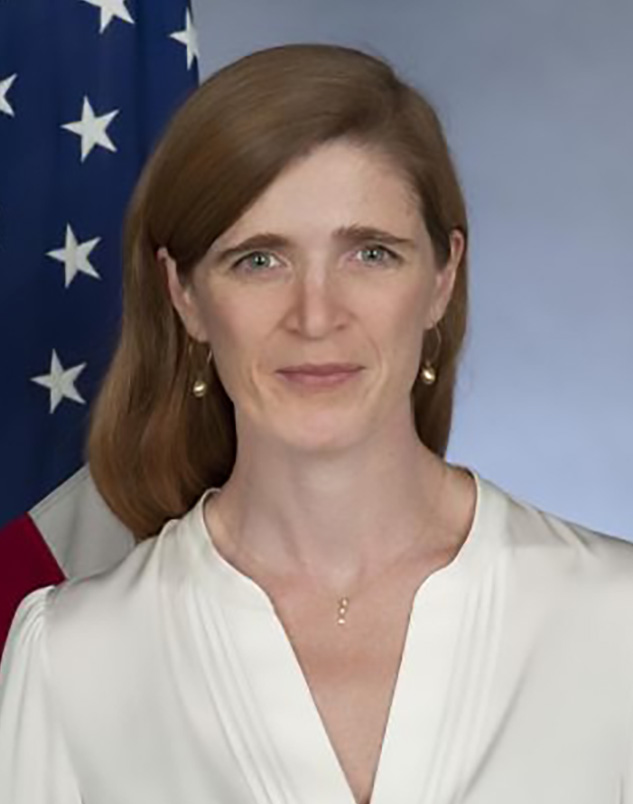
What Happened?
With a powerful speech in January at the World Economic Forum in Davos, the U.S. Agency for International Development’s (USAID) Administrator Samantha Power called for a global effort to “eliminate lead in consumer goods,” stating that “[l]ead poisoning claims a staggering 1.6 million lives each year. That’s more than the deaths caused by malaria and HIV/AIDS combined.” The agency’s announcement says, “Lead exposure may account for upwards of one fifth of the educational gap between rich and poor countries, and creates at least a $1 trillion drag on the global economy. Despite all of this, funding by donors toward lead mitigation efforts in low- and middle-income countries amounts to approximately $15 million per year.”
Administrator Power laid out a four-step effort towards a “lead-free future”:
- Conduct regular blood and market testing, and ideally blood lead level testing, to identify exposures and trace them back to the source.
- Pass binding controls to phase out lead in specific products and industries.
- Where needed, support the private sector to transition to lead-free and often—and this is key—cost-comparable alternatives. Those cost-comparable alternatives are out there and accessible; they just have to be seized upon.
- Enforce and ensure that regulations are being followed.
The agency will advocate “for a global drive to support low- and middle-income countries in rolling out and enforcing binding regulations to curtail lead in consumer goods like paint, spices, and cosmetics.”
Why it Matters
FDA concluded that lead chromate was added to cinnamon, resulting in shockingly high levels of lead in applesauce pouches that were recalled in the U.S. in November. As with turmeric and chili pepper spices before, this appears to be a case of economically-motivated adulteration designed to increase the weight or appearance of the spice.
Beyond economic adulteration, the U.S. has made significant progress setting and enforcing standards for consumer products—children’s toys, residential paint, and more recently plumbing, aviation gas, food ingredients, and metal cookware—to reduce children’s exposure to lead. Our country has also tightened pollution standards for industrial operations that make, process, recycle or dispose of lead-containing products.
However, these positive steps for the U.S. can harm people in low- and middle-income countries by shifting the burden to those regions. Specifically, it can:
- Divert non-compliant products with high levels of lead to low- and middle-income countries that lack the regulatory infrastructure to protect their citizens. This is particularly a problem when global or corporate standards are lax or missing, such as with spices and toys.
- Undermine communities where environmental contamination makes producing compliant products challenging. The result is that these communities may lose access to global markets without a corresponding investment in finding local solutions.
- Provide a perverse incentive for industry to relocate overseas rather than meet tighter U.S. standards to comply. We have seen this with secondary lead smelters that recycle lead acid batteries.
Our Take
For more than 20 years, I have worked with groups seeking to tighten national and international standards for lead and other contaminants in consumer products. And often I saw the law of unintended consequences kick in.
For example, in 2006, a Minnesota child died from ingesting a jewelry charm made of lead coated in plastic. Congress passed the Consumer Product Safety Improvement Act of 2008 to limit lead in children’s products to 100 parts per million. Scientists at Ashland University in Ohio evaluated the lead in the charm and realized the lead was from circuit boards where the solder connections were melted off and used. A reporter told me about his site visit to a plant in China that did exactly that. After the ban went into effect, consumer groups found that the lead in similar jewelry was replaced with cadmium, presumably from recycling of nickel cadmium batteries. Cadmium has different hazards but is just as bad as lead. After a citizen petition to CPSC, the industry set voluntary standards where today, compliance is inconsistent.
We may see similar effects with setting tight limits for lead in baby food, fruit juice, or spices. While global standards such as those of Codex Alimentarius can help, they too easily boil down to formulaic approaches that fail to adequately consider the health consequences and the potential best practices for the impacted communities.
The bottom line is that with a global marketplace, we need to engage stakeholders throughout the product’s lifecycle, recognize potential impacts, consider the market forces, protect workers and fenceline communities, invest in technologies to sustainably reduce contamination, and press for higher corporate and national standards that account for the impact on all communities, especially those already struggling with inequitable health impacts. In this way, we can help communities around the globe better protect themselves from lead.
USAID’s initiative is an important step in this direction.

